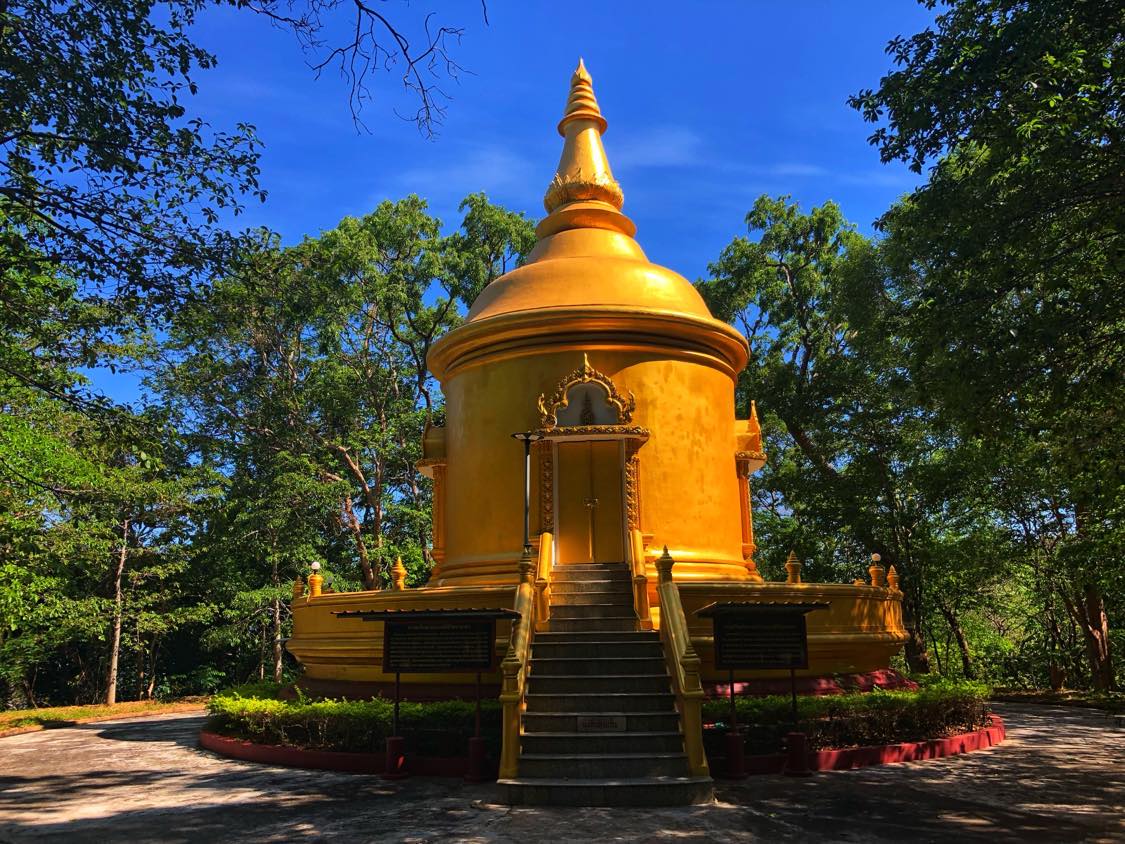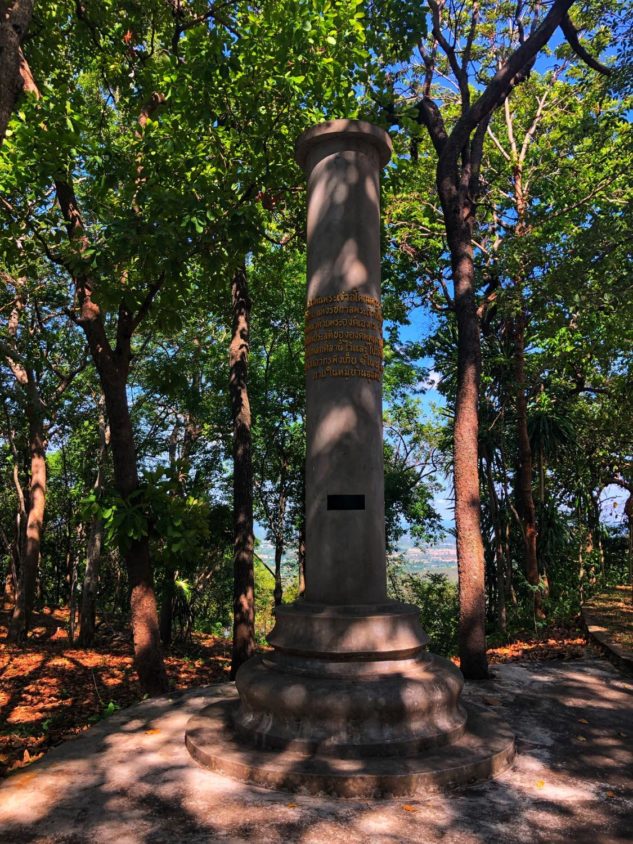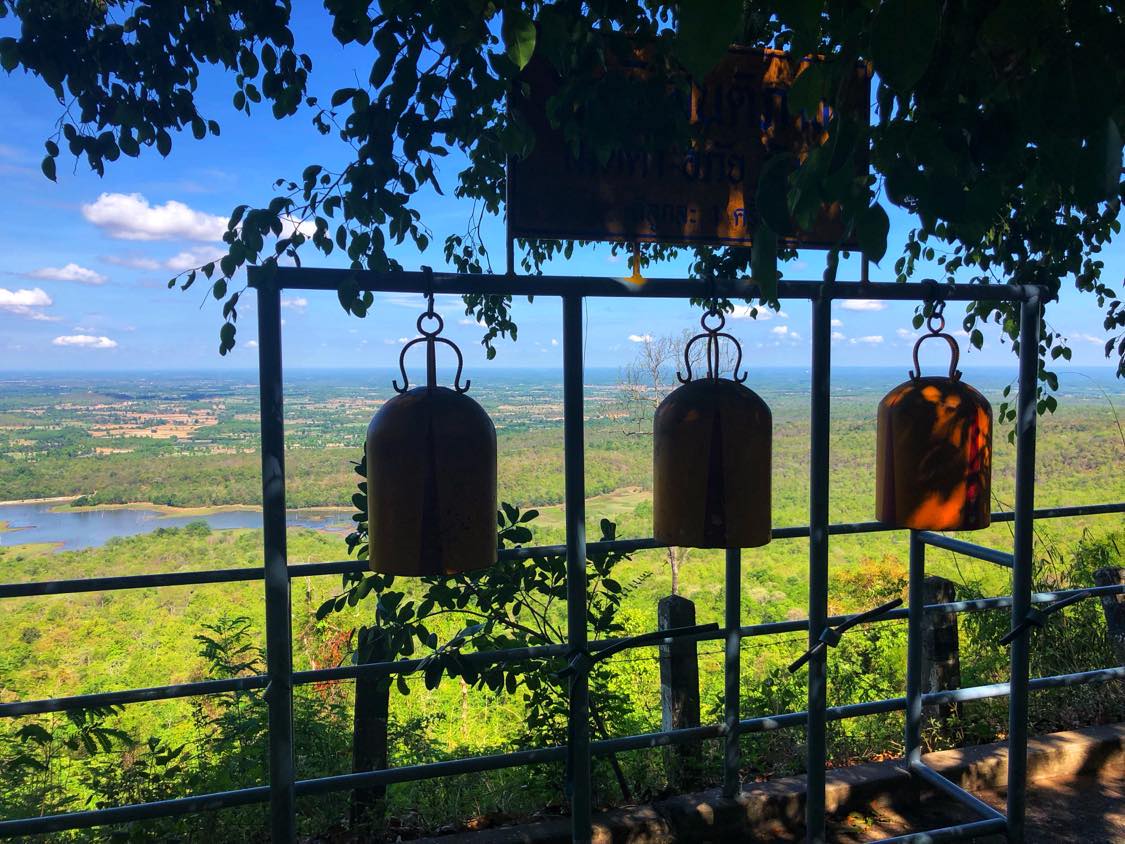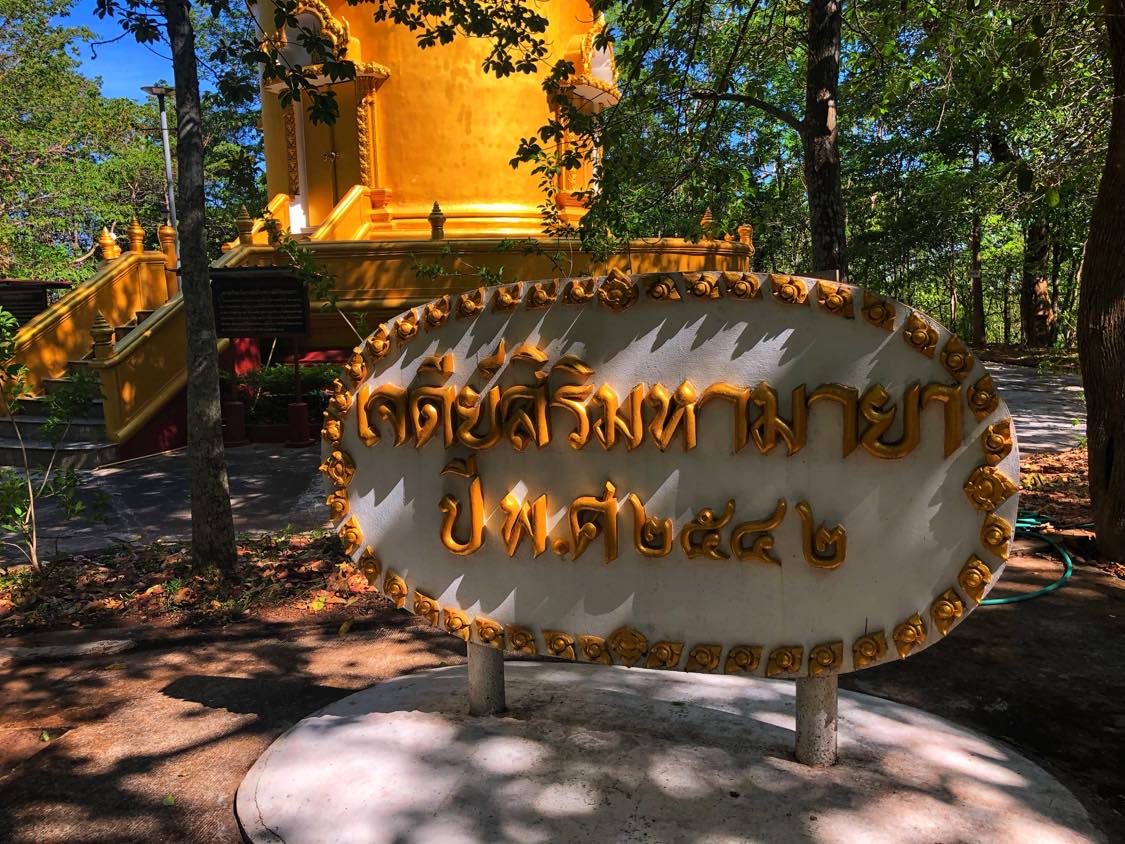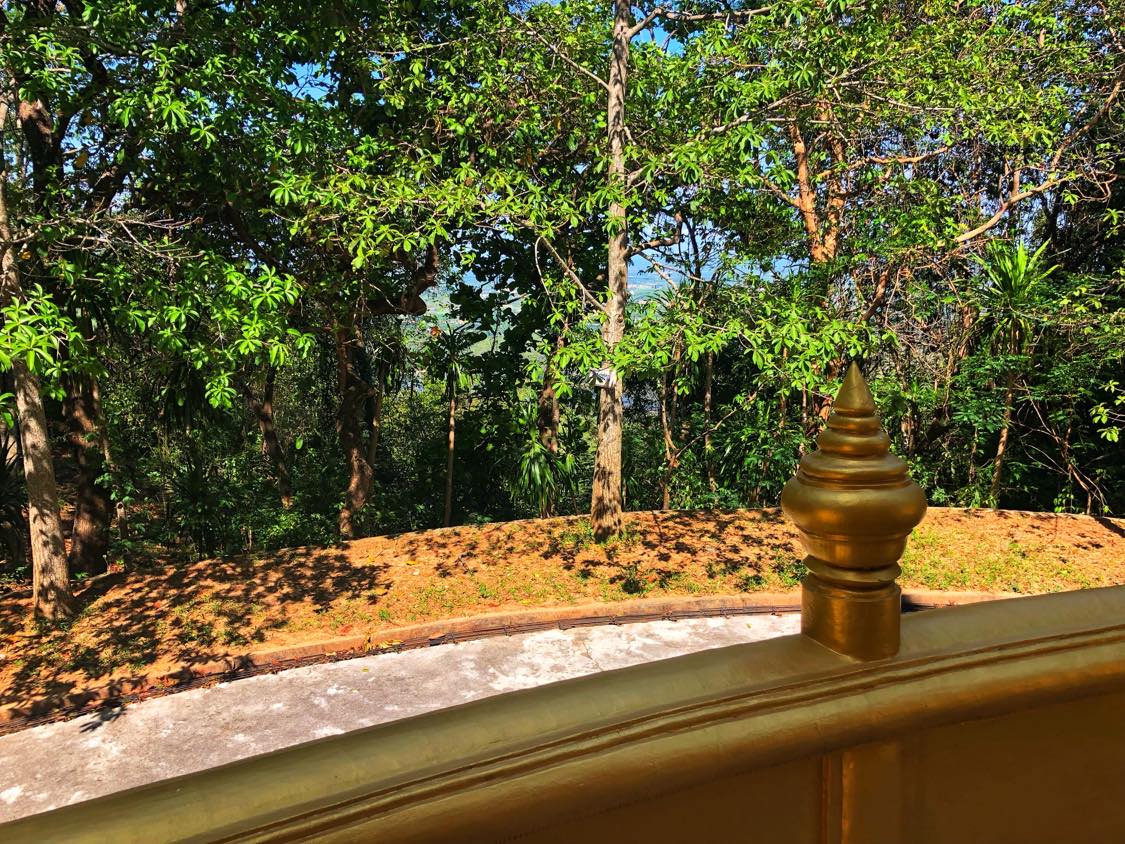Description
Phra Chedi Siri Maha Maya (พระเจดีย์สิริมหามายา) is only a few hundred meters north of Wat Tham Apai Damrongtham on a mountainside road that overlooks the Song Dao district of Sakon Nakhon. This Chedi is named after the mother of Gautama Buddha, Siri Maha Maya, who was the sister Phra Maha Pajapati Gotami Theri (พระมหาปชาบดีโคตมีเถรี), the first nun of Buddhism. The Chedi is a replica of the birthplace of the Buddha, as well a museum honoring the life of Phra Ajahn Wan Uttamo, the bulletproof Thai monk.
Phra Chedi Siri Maha Maya is 2-storey tetrahedral building with a pagoda-shaped roof divided into 3 parts: the base, the building, and the top, crowned with a lotus bud. There are stairs leading up to the Chedi on all 4 sides, and 3 entrance arches: east, west and south. However, the entrances are often locked.
If you are lucky enough to find one of the entrances to open, you'll find that the walls have paintings telling the history of Arjarn Wan Uttamo, as well a wall with relics from the monk. The Chedi was built from 2007-2009 at a cost of around 1,200,000 baht.
You''ll also see a pillar in front of Chedi. This pillar is a replica of one of the Pillars of Ashoka, which are a series of ancient stone columns erected by the Indian emperor Ashoka during his reign from approximately 268 to 232 BC. These pillars were built to spread Buddhist teachings and promote moral principles throughout Ashoka's vast empire, which covered much of present-day India and beyond.
An Ashoka pillar is a single monolithic shaft, usually made of polished sandstone and reaching heights of up to 50 feet (15 meters). They are crowned with elaborate capitals, featuring animal motifs such as lions, bulls, elephants, or horses. The most famous example is the Lion Capital at Sarnath, which is now the national emblem of India.
You will occasionally see a replica of one of these Pillars of Ashoka at Thai temples and sacred Buddhist sites in Thailand.

